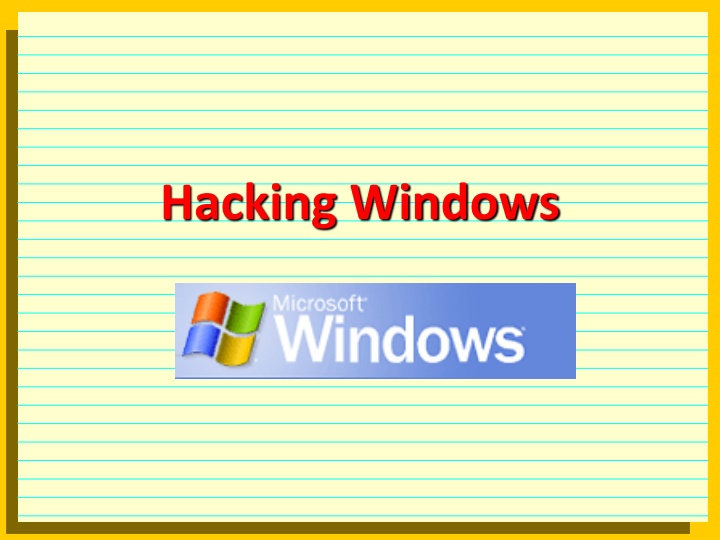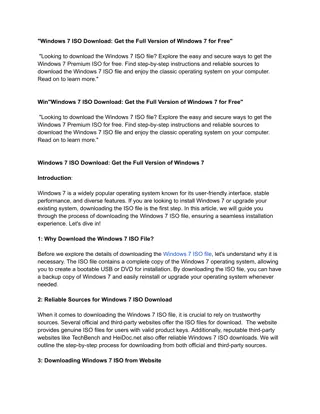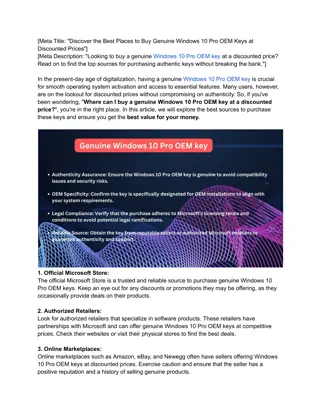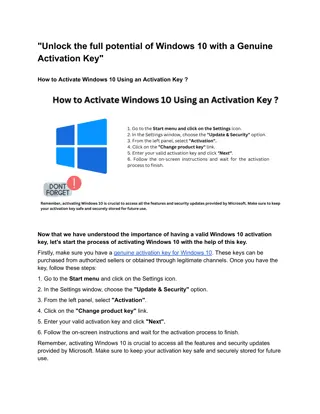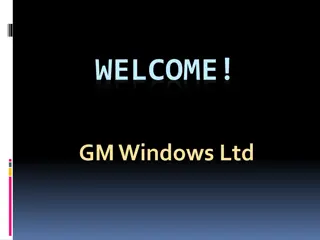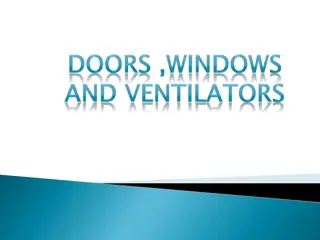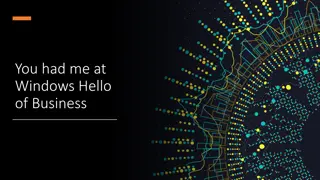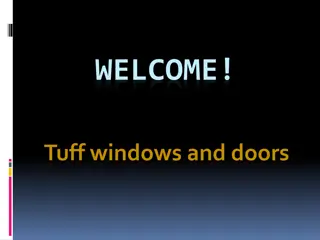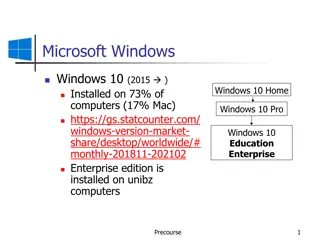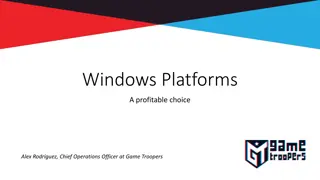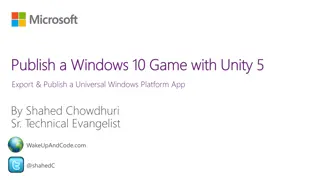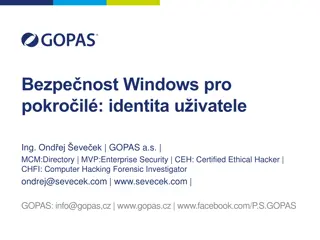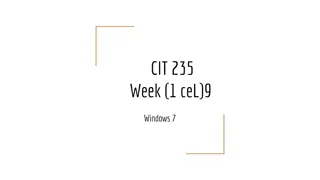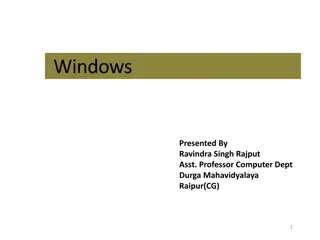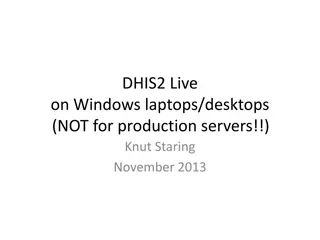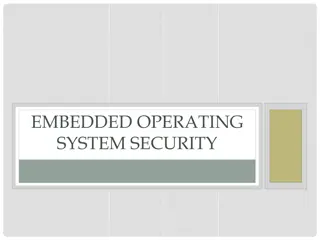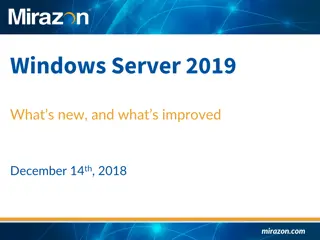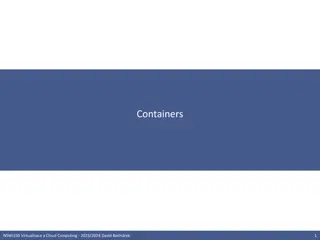Windows Security Overview and Best Practices
Windows operating system security overview focusing on preventing unauthorized access, privilege escalation, and password vulnerabilities. Includes countermeasures such as setting proper permissions, implementing strong passwords, and detecting vulnerabilities. Covering topics like remote password guessing, privilege escalation, trojans, and cracking passwords using tools like L0phtcrack.
Download Presentation

Please find below an Image/Link to download the presentation.
The content on the website is provided AS IS for your information and personal use only. It may not be sold, licensed, or shared on other websites without obtaining consent from the author.If you encounter any issues during the download, it is possible that the publisher has removed the file from their server.
You are allowed to download the files provided on this website for personal or commercial use, subject to the condition that they are used lawfully. All files are the property of their respective owners.
The content on the website is provided AS IS for your information and personal use only. It may not be sold, licensed, or shared on other websites without obtaining consent from the author.
E N D
Presentation Transcript
Windows Windows basic security: Net logon, no bypass of BIOS (HAL), No remote access to console (default), requires admin privileges for interactive login (Server), and has object-based security model: a security object can be any resource in the system: files, devices, processes, users, etc. server processes impersonate the client's security context (key for file servers) Windows is windows NT updated, with more security tools and patches . Quest for administrator Privilege Escalation Consolidation of power, and Covering tracks.
Quest for Administrator Remote password guessing. Net use can help. Nat guesses passwords using user and password lists (Cain and Abel) is similar). Countermeasures: close ports: use Disable NBT to disable 139 and File and Printer Sharing to disable 445. Use Account Policies to setup password length, lock, expiration, etc. Passfilt implements stronger passwords just activate. Read good and bad passwords and see how to reduce other password vulnerabilities. A database of hacked passwords Pwned Passwords (download do not use online). NIST authentication recommendations and this funny take on it.Use Nmap to exploit MSRPC. Eavesdropping on network password exchange and obtaining password hash values: Sniff tools and NT user authentication. Remote buffer overflows: local (interactive login users), LSASS, and remote using Web, FTP, DB servers and many others. Basic countermeasure: download and run Microsoft Baseline Security Advisor to check for patch vulnerabilities. Run administrative jobs from regular accounts.
Privilege Escalation Gathering information: logged as user (not admin), use enumeration tools. Basic countermeasure: set files/directory permissions properly. BIOS password!! Add to administrator group: getadmin and sechole - apply service packs and restrict FTP to server script directories. Also rogue DLLs. Spoofing LPC port requests: using LPC ports API to add to admin group. Again apply the corresponding patch. Trojans: Basic rule: do not use a Server as a workstation (no e-mail, no outside browsing), backup! See Symantec Trojan, Worm, virus list. Or this other with Trojans by ports. And how Trojans scan ports. Kerberos V5: only 2K and above machines have it, downgrades to LAN Manager authentication if older Windows are involved. EFS attack: deleting the SAM blanks the Administrator password. Set BIOS password and C: drive boot only. This allows to login as Administrator (the recovery agent) and decrypt the content of the files (just open and save in a regular folder). It is possible to backup the recovery keys .
Consolidation of Power Assumes that administrator-level access has been obtained. Cracking Passwords: See an introduction/FAQ. L0phtcrack is the key tool, graphical, good documentation and was acquired by Symantec. Again Abel and Cain , etc. Countermeasures: choosing strong passwords. Use SYSKEY SAM encryption, but Pwdump7 circumvents SYSKEY and dump hashes from SAM and Active Directory. Duplicate credentials: locally stored domain user credentials, local Administrator with same password as in the Domain. LSA Secrets: includes plain text service account passwords, cached passwords(last 10), FTP and web user plain text passwords, etc. DSScan detects LSA vulnerabilities. Keystroke loggers: record every keystroke to a (hidden) file. See a variety of Free Keyloggers at cnet to capture keystrokes and more. Sniffers again: See Sniff tools and also dsniff (Win32 version).
Consolidation of Power Remote control: Remote control applications (pcAnywhere, VNC, Windows RemoteDesktop, etc.) are useful, but a major security risk, even when configured properly. Rootkits: patching the OS kernel with rogue code, assuming control of the OS. See Rootkit in Wikipedia for now, more later. Port redirection: redirect from one IP number and port to another IP number and port at the gateway/firewall. See rinetd and fpipe. Man-in-middle-attacks: originally using SMBRelay and SMB Proxy, Abel and Cain MITM capabilities. Check security settings in Domain Controller ports 389 and 3268 (Active Directory). Remove Everyone group from access. Covering Tracks Disabling Auditing: using Auditpol and an example. Clearing the Event Log: use elsave to clear the Event Log. Hiding files: using attrib, NTFS file streaming. Use LNS to search for files hidden in streams.
